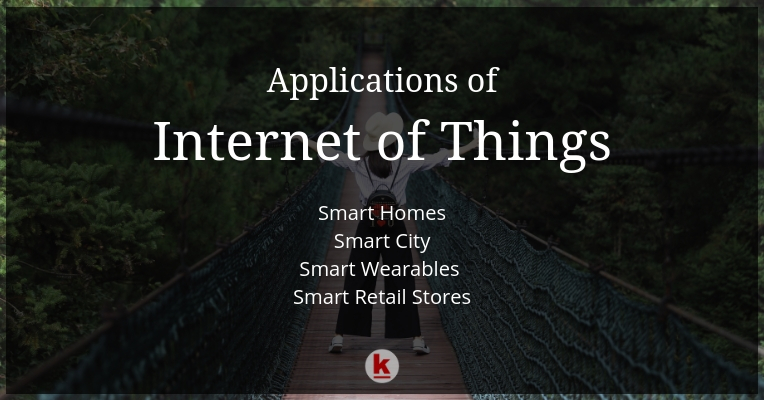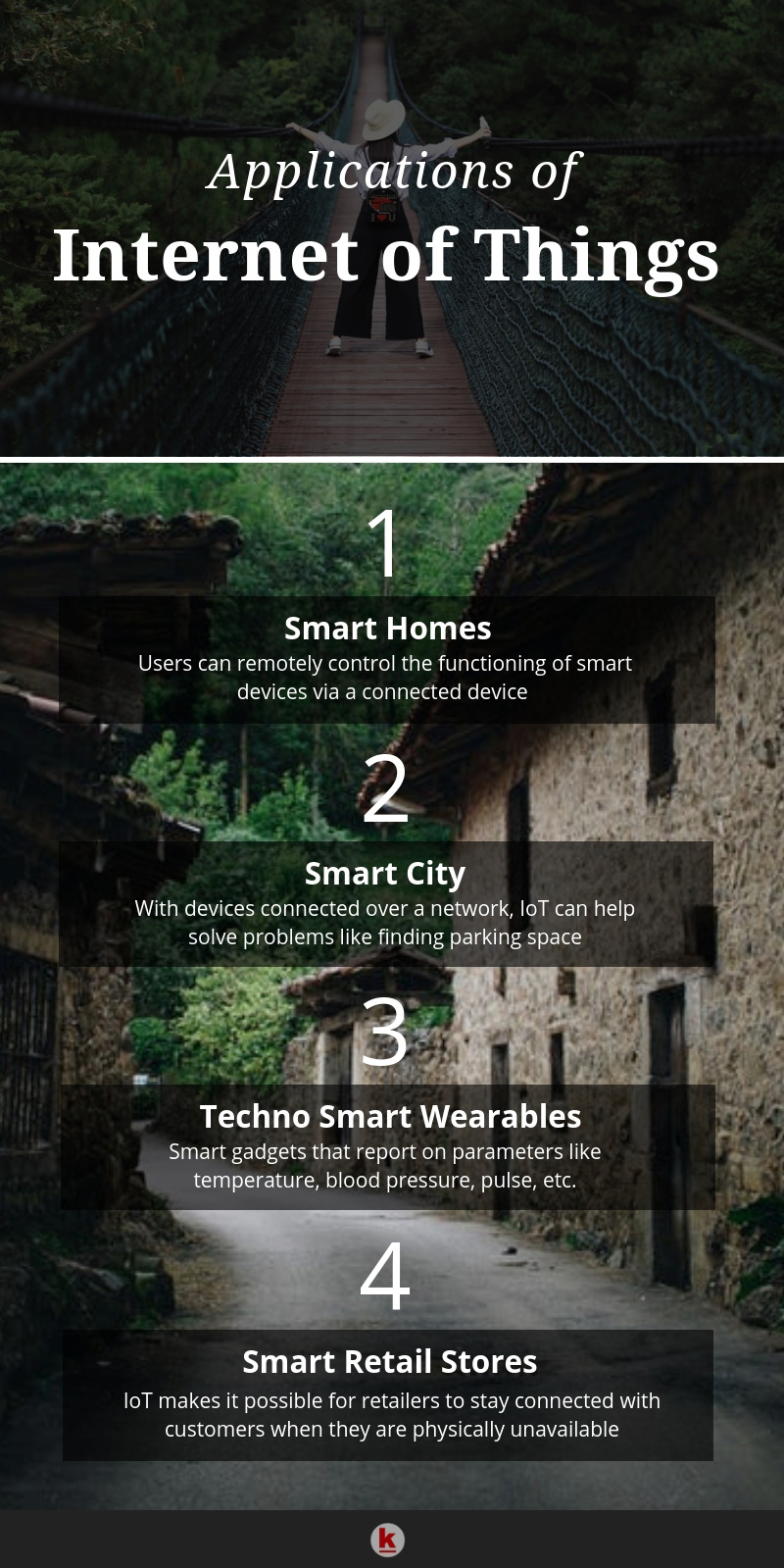
Internet of Things Applications

In today’s era, a human’s dependency on technology cannot be overlooked. We won’t be wrong in calling a machine as one of the most loyal friends to a human.
The world of technology is ever evolving with new technologies joining the hub, one of which is the Internet of Things (IoT), that has influenced almost every domain.
What is IoT?
If you are aware of the future technological trends, then most likely IoT is not something new to you. IoT – Internet of Things – It is basically a network of physical devices, digital machines and other objects that help in the smooth transfer of data over the network without any real-time interaction. For example, Nest-a smart thermostat studies your family routine and adjusts the temperature of your home based on it when you are away.
To explore IoT in greater depth, read this blog that tells you how IoT impacts our daily life.
How does IoT work?
IoT consists of all web-enabled devices that collect, send and act on data they acquire from their surrounding environments using embedded sensors, processors and communication hardware. Humans can interact with the gadgets to set them up, give them instructions or access the data but the devices do most of the work on their own without human intervention. IoT aims to take the connectivity of multiple devices to a higher level.
Basically, it is a 4 step process-
- Sensors– firstly sensors help in collecting data from the surrounding environment
- Connectivity– the data is then sent to a cloud infrastructure through the Internet
- Data processing– once the data is collected, it is sent to the cloud server where the processing of the data is done based on previous interactions. However in case of complex situations like when an intruder enters the house, a user can step in to determine the next cource of action.
- User interface– by certain means the information is made available to the user, either by triggering an alarm on their phones.
A real-time example of the Internet of Things is the August smart lock that reflects the effectiveness of IOT. You don’t need keys anymore, the control to your door lies on your phone. You can decide who can enter your home and who cannot while being miles away from your house!
However, similar to other technologies, there are both pros and cons of Internet of things.
Here are the applications of the Internet of Things:
Smart home
If you have heard about IoT, then smart home is the most searched associated feature with Google.
A smart home is a home that is equipped with smart devices that can be controlled remotely by the user via a connected device (smartphone, computer, laptop).
Smart home companies like Nest, Ecobee will be names that will be famous in the near future, because by then Smart Homes will be a necessity just like smartphones.
Smart city
Another example that uses the Internet of things, is the concept of the smart city. This includes smarter surveillance, automated transportation, smarter energy management systems.
If implemented appropriately, IoT can help solve major problems that people face. This could be the problem of traffic congestion, parking space availability, pollution, etc. By installing IoT sensors and web applications, citizens can easily find solutions to such problems.
Techno smart wearables
Techno smart wearables are in demand and will continue to rise. Companies like Google, Samsung are investing heavily in such devices, but how do they work?
Such devices are installed with sensors and software that collect data and information about the user. These devices broadly cover health, fitness and environment and deliver data on parameters such as pulse, blood pressure, temperature, etc.
For example, Omron’s blood pressure tracker that resembles a running watch is actually a fitness tracker. It monitors the blood pressure of the user, without anyone knowing it.
Smart retail stores
The potential of IoT in the retail sector is enormous. IoT provides an opportunity for retailers to connect with the customers in a way that gives them an amazing viewing experience.
One definite benefit of using IoT is having increased data about their customers. This also makes it possible for retailers to stay connected with the users even when they are physically out of the store.
An IoT enabled retail system helps you create an experience that keeps the customers happy and satisfied. In cases where users have to wait for long at the check-out counters, the possibility of them exiting before making any purchase is higher.
To avoid such a situation, with the help of user’s data fed into the system, you can target customers who are likely to purchase more. This benefits the retail owners, as the customers skip the long queue at the check-out counters to do some more purchasing to claim benefits as promised.
These were some of the real-time applications of IoT. There are other domains where IoT is bound to impact like the agriculture sector, connected cars etc.
These interconnected devices will bridge the gap between the physical and digital world that will improve the quality of life. Do you think of Internet of Things technologies is driving us to a digital future ahead? Let us know what you think in the comments below!
Enjoyed this blog? We also accept guest posts! Take a look at our guest post terms.
